Jesus & Mary Secondary School, Gortnor Abbey - Ireland
Region: County Mayo
Other schools in the Quad Blog: Muurolan Peruskoulu (Finland), Chenderit School (UK), Institut Torres i Bages (Spain)
Creative Connections Project: Being European
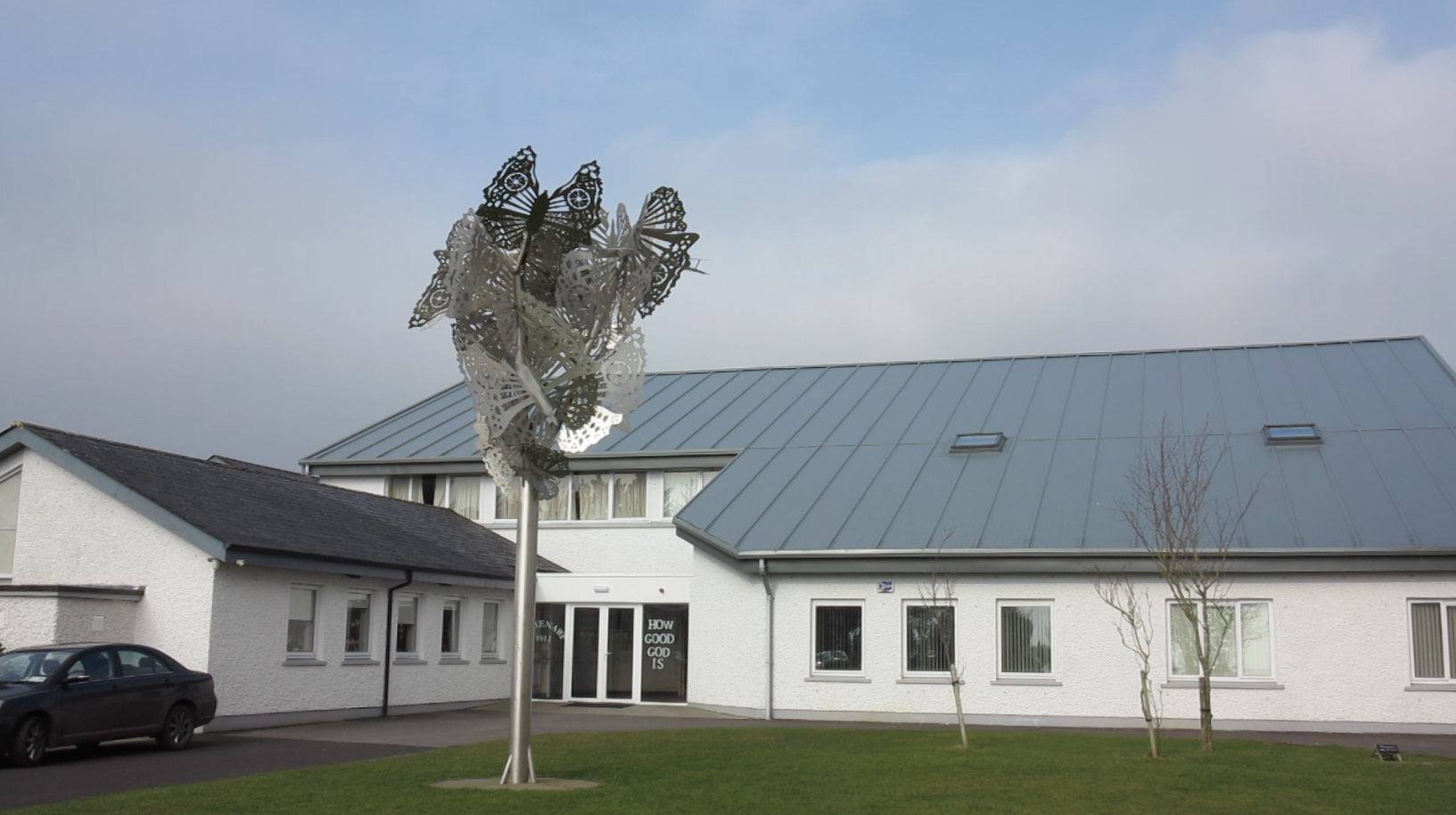
Gortnor Abbey is a Catholic mixed co-educational secondary school, situated idyllically on the shores of Lough Conn close to the town of Crossmolina in County Mayo in the West of Ireland. The school enrolment is 469 (226 boys and 243 girls aged between 11 and 18 years). The school is situated in a rural community with the largest town 11kms away. Students come from both rural and urban backgrounds.
The school serves a widely dispersed catchment area in West Mayo catering for sixteen primary schools from many towns who seek enrolment each year. Gortnor Abbey plays an integral part in the life of this close rural community and the school takes great pride in its long tradition of providing quality education to families in the area for over a century. The school welcomes respects and accommodates students from all socio-economic backgrounds and of all ability levels.
The Art Department
There is one art teacher in the school, and the art room is large and well equipped with ceramics facilities, wheels, kiln, a darkroom and screen printing facilities. The art ethos is strong and the school has had a strong track record of engaging in national events and competitions over the years. The art teacher attended two training days for the Creative Connections project at the National College of Art and Design in October and November in 2012.
The Creative Connections project
The student group involved in the Creative Connections project was in Transition Year (TY) which is 4th year, when they participated in the study. They are now in their final year of school in Leaving Certificate. The group was made up of ten girls and two boys. The students in the group were all of Irish origin. The art teacher, in undertaking the project, gave the students the opportunity to express their views and opinions in a visual way rather than purely in a written format around the theme of being European.
In describing her approach of mixing a visual approach with the discursive element the art teacher commented
The whole theme of being European; how to describe that visually for them so it was all about discussing the different countries and what it meant to be European, was more wordy and literal I suppose rather than visual.
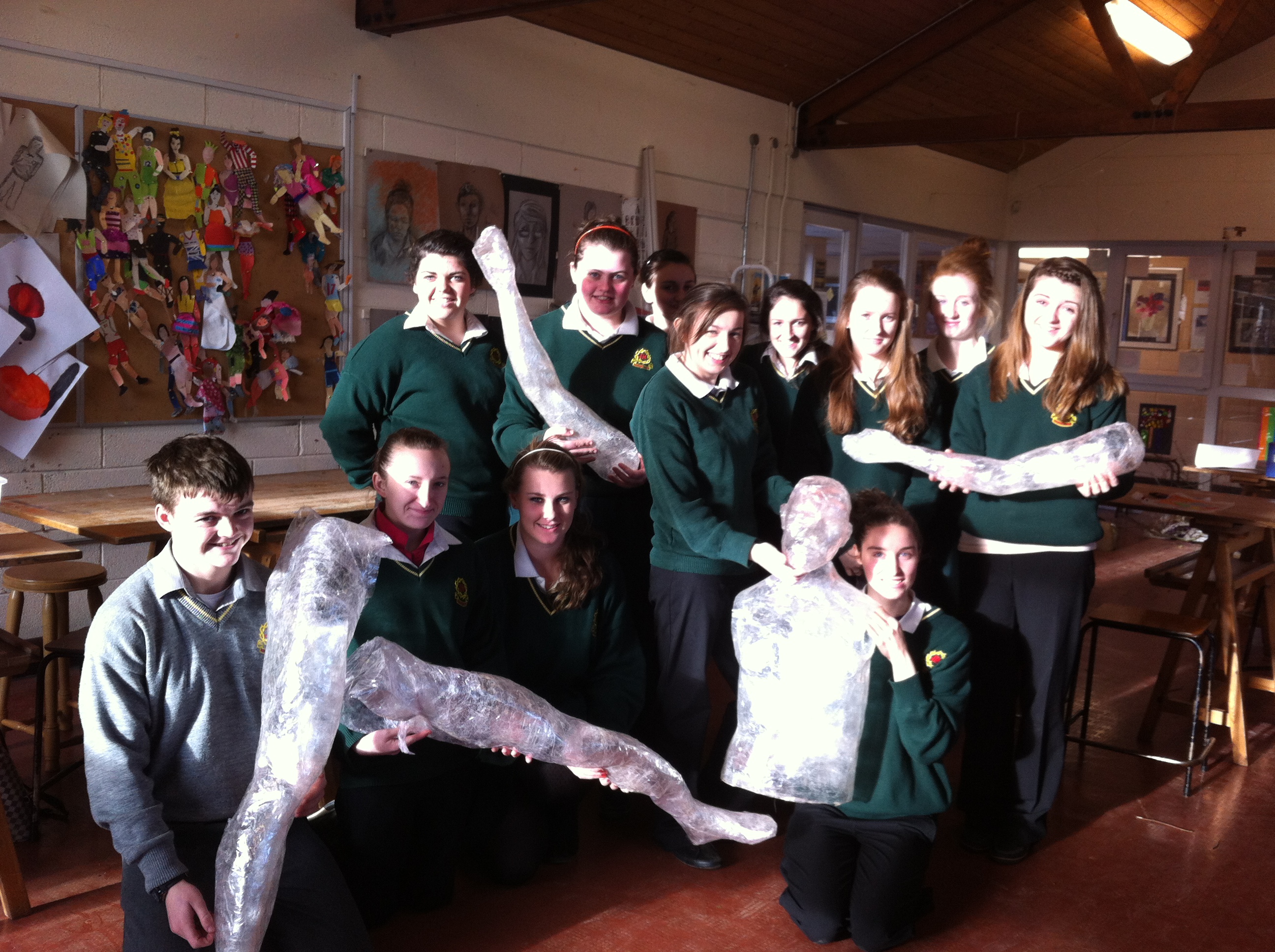
Where did we begin?
Each student was asked to design and make a visual representation of what it means to be European. The teacher only gave a general outline of what to do as to allow the students full control and freedom with their ideas and designs.
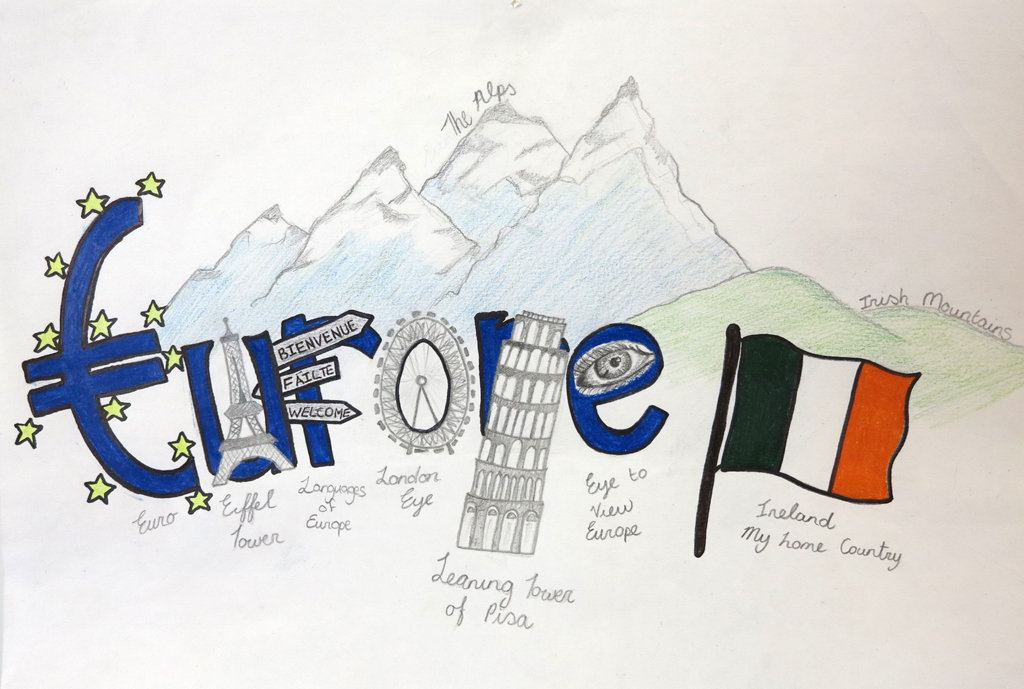
When the designs were complete each student presented their work along with a verbal representation of their ideas and opinions. This introduced the idea of conversations about being European within the group. One factor that was noted by all was that within their school community there are very few other nationalities.
The Creative Connections Project
The group decided that they wanted to showcase their environment through the project as the school is situated in such a beautiful location. After looking through the Creative Connections website, the Irish artist Alice Maher was the artist that the students chose to explore as Alice Maher’s work deals with ‘landscape and memory’ using identity and environment as a theme. They felt that her work was very different from what they had been covering in Art history and they enjoyed researching her.
One student commented that:
She was different and creative and she didn’t stick to the rules.’ Another student commented that ‘it is a lot more contemporary than the stuff we studied so it was a bit of a shock to the system when we saw it.
Bob: a visitor from Europe
The students came up with the concept of creating ‘Bob,’ a visitor from Europe who arrives at the school and is photographed in different locations. The influence for the idea came from the garden gnome who travels to different countries (as seen in the French film Amelie). The intention was to show the life and environment of a rural Irish school through the eyes of a character called Bob.
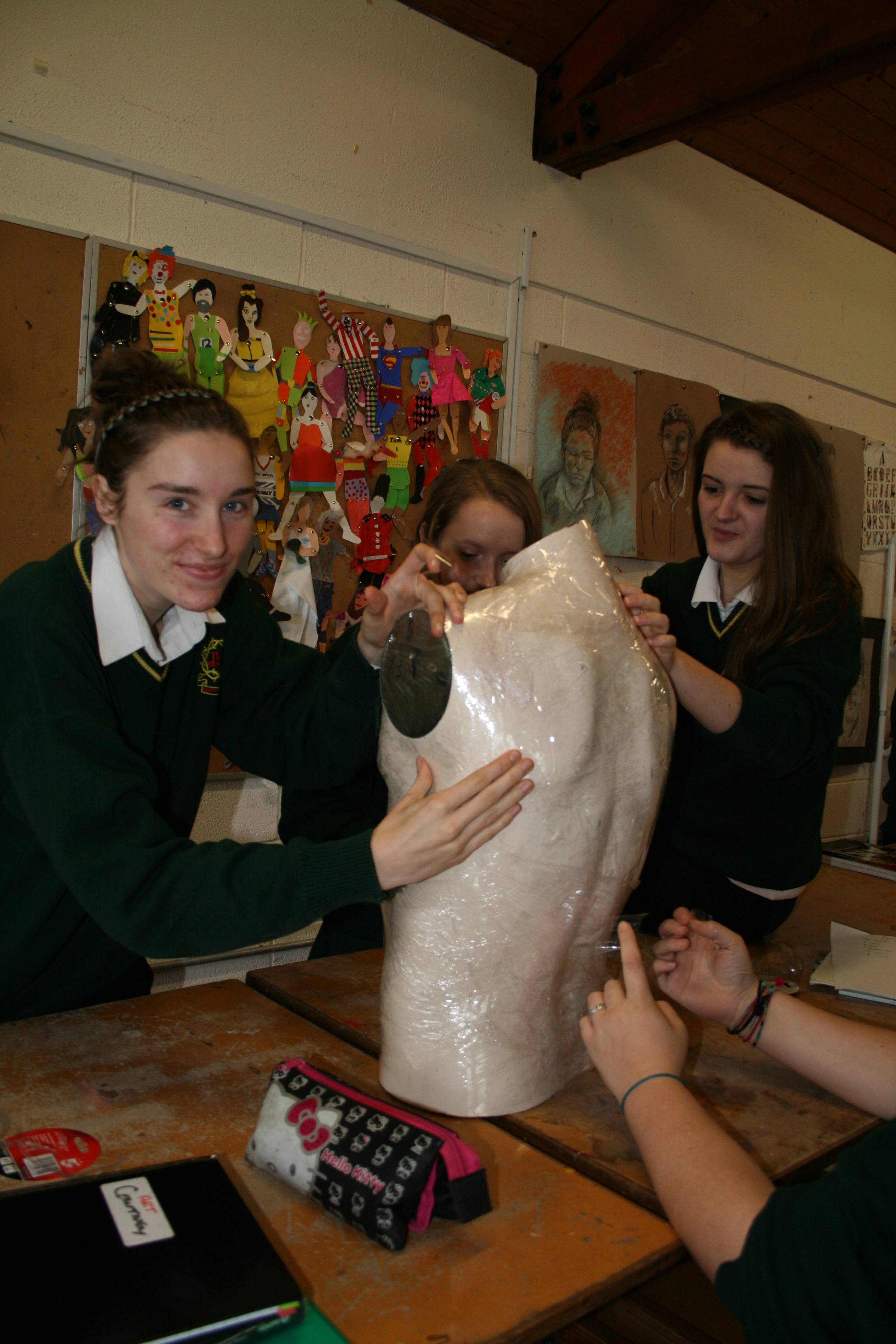
Bob was to be a full size figure that could be transported easily around. The class came up with various ideas on how to create Bob. They finally concluded that the use of sticky tape and plastic would be the optimum media for his creation. The students liked the idea of him being translucent and having the environment reflect through him.
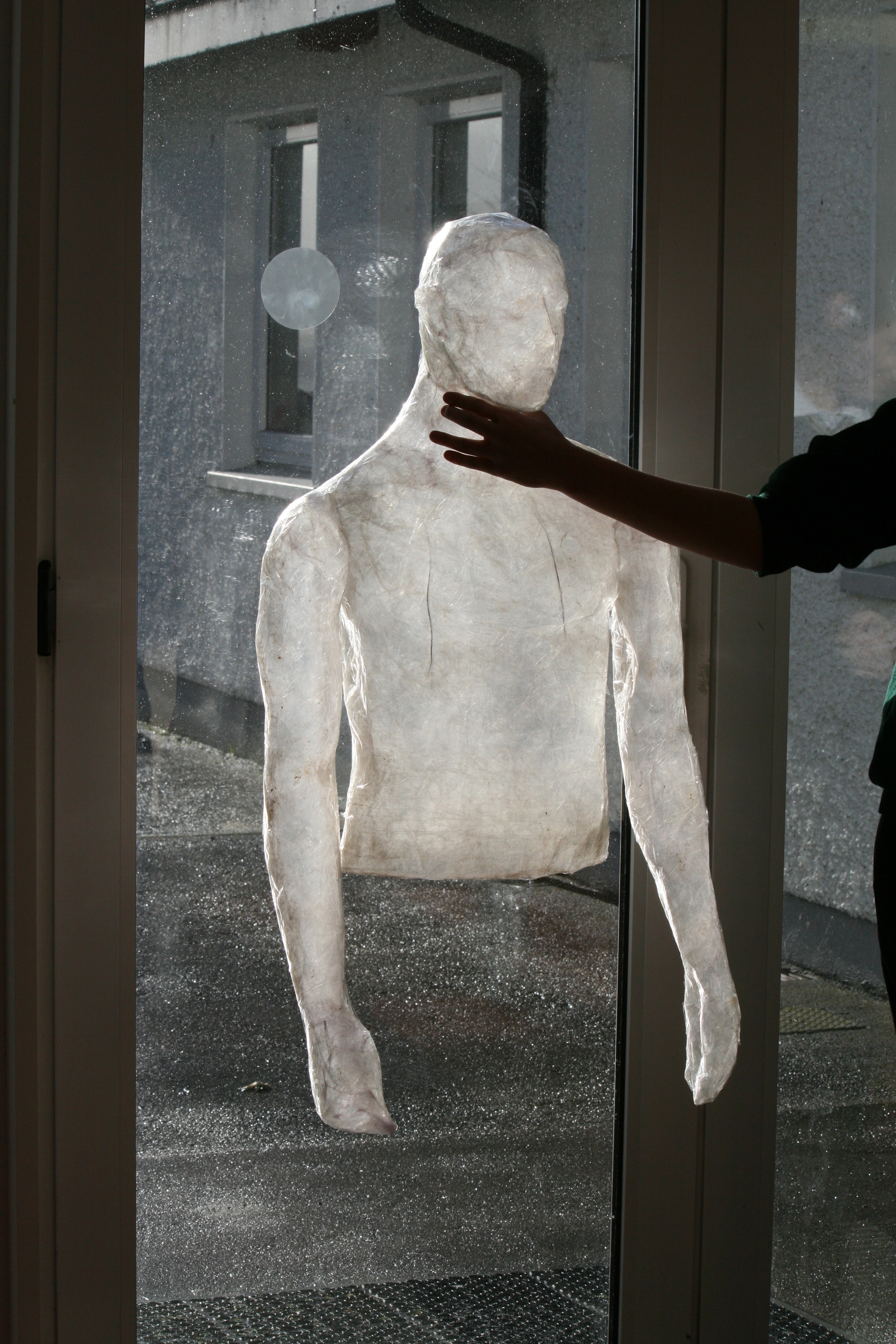
The character Bob served as an interesting vehicle to explore aspects of the school which represented the student’s National Identity.
The teacher’s comment:
A mannequin was sourced from a local shop and the students used this as a mold to create Bob. Bob, when finished became a well know character within our school community with him attending sports fixtures and classes. He even got to sing with the school choir. On occasion he was found in the most interesting and surprising of places.
The discussion and the research around Europe happened in single classes in the beginning and the art teacher found that it was difficult to sustain throughout the period.
The teacher’s comment:
In the double class it was all about what we were making for our project and that took over completely because as that started to develop there was great excitement. When I slipped back into let’s talk about being European again it was flat; they wanted to do the art based stuff rather than that.
Reflections on using the Creative Connections website
The group started up conversations on the website when Bob was finished. However, because they had finished him quite quickly there were very little conversations created between the different participants. The students were very interested in the images of the other schools especially the video footage from Finland where by they had the opportunity to observe their school environment which they felt looked like IKEA.
The teacher’s comment:
It was lovely to see on the website the other European schools. It was great to see inside someone else’s classroom. It was lovely to see the artwork that was being created in Finland and in Spain. It was lovely to have a connection to different places more….but I can’t say that I have walked away from this knowing anything more about being European.
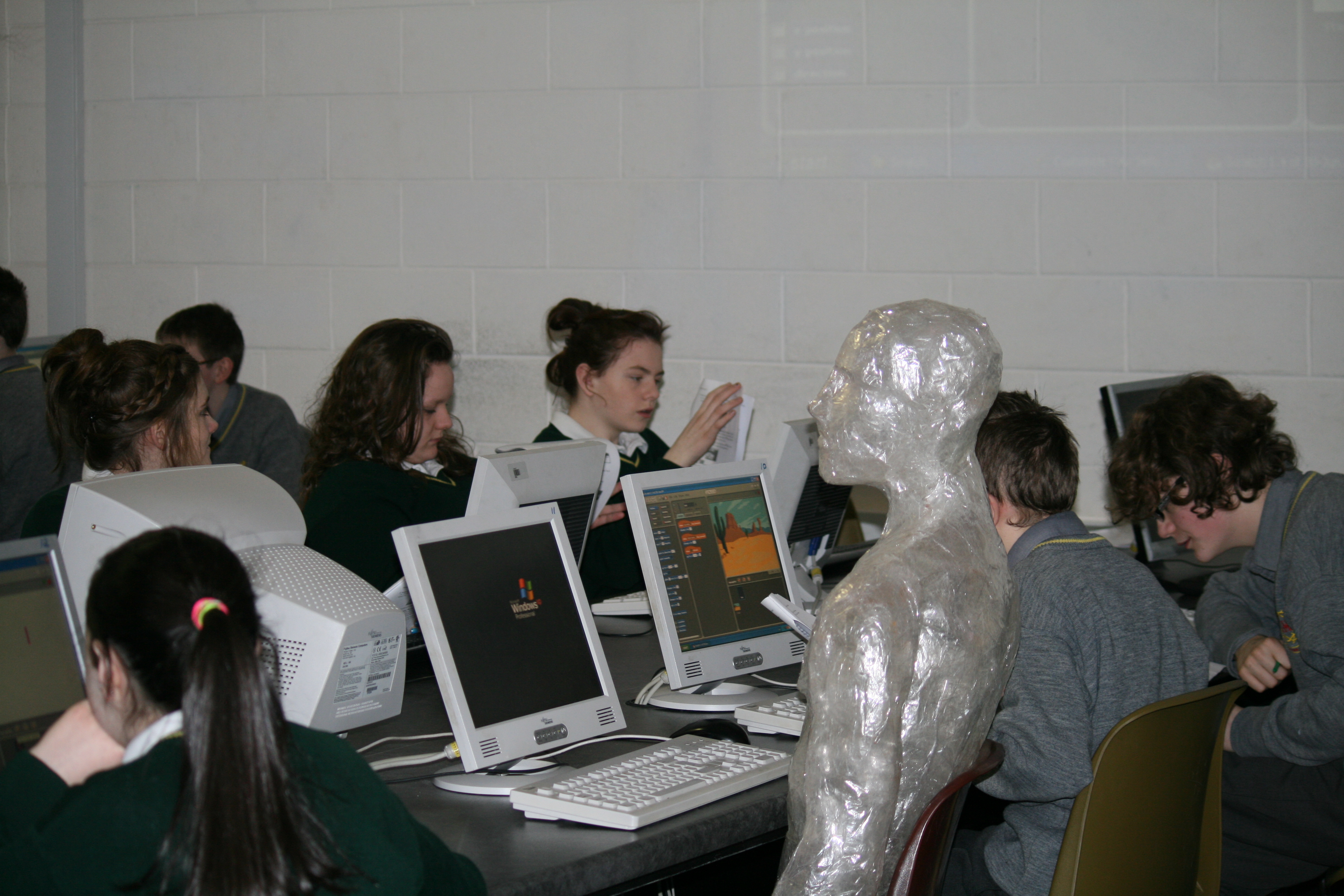
The students enjoyed the experience of the project and it did create conversations about being European.
The teacher’s comment:
There was a lot of discussion at class level. Then there was great excitement when there was the possibility of opening it up to being on the internet and being able to connect with other schools. So the minute I’d say that their work became live and that they had put it up on the internet, they decided to quad blog and what not.
Negotiating the website and quad-blogging
However, the website was the part of the project that students found most challenging. They felt that it was very difficult to navigate and all expressed that a Facebook template would be far easier to use.
The teacher’s comment:
As we put the work up there was nothing up from other schools at that point so there was no feedback. So our students weren’t getting any response to the work that they had put up so they weren’t able to engage in discussion and by the time the discussion started to happen on the website I feel that the whole excitement of the project had gone.
For the art teacher and students of Gortnor Abbey, the Creative Connections project a more direct connection with one school would have been desirable:
The teacher’s comment:
We had wished to send Bob to Finland and that would have been I think a very nice way to end the whole process of having created him, connected with the students in another school and then to see him over in the other school. That might have been a nice way to end it....to be given the opportunity to do a project like this was great and the students really enjoyed it.


